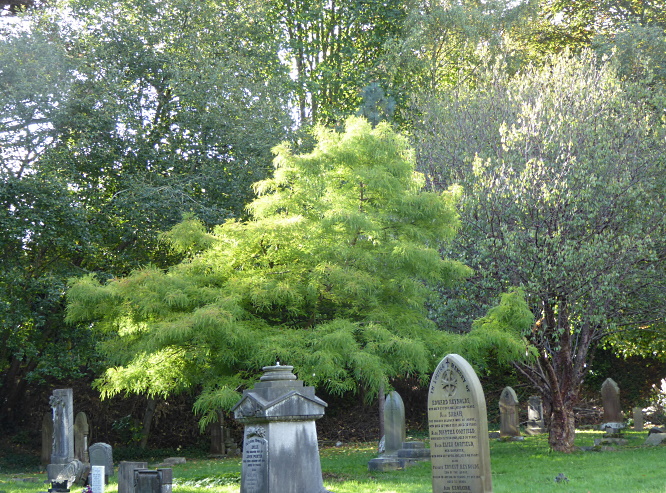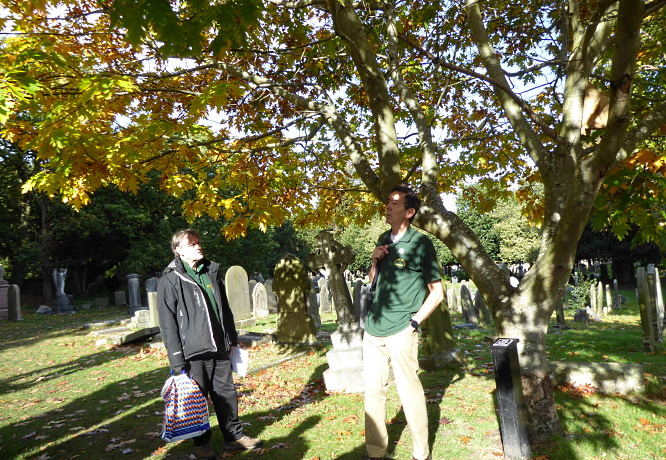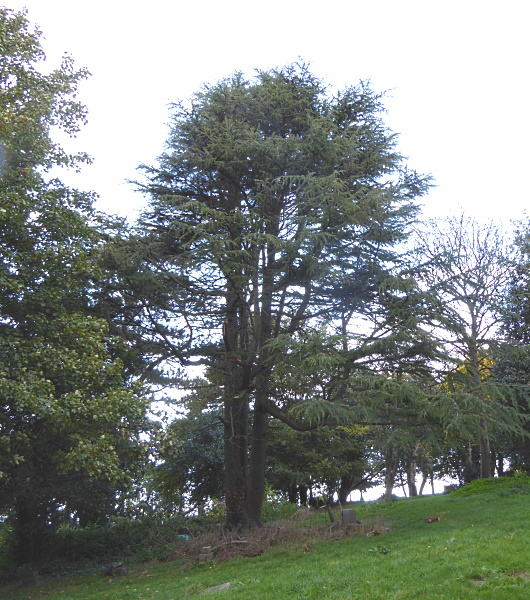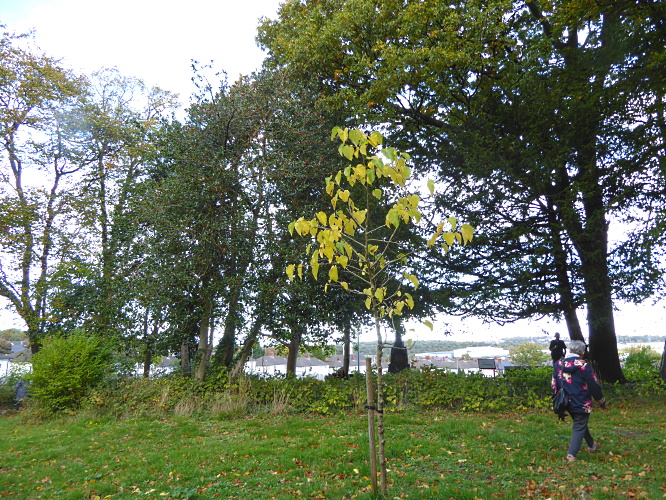
This was a Saturday walk organised by the Friends of Flaybrick called “Flaybrick Autumn Tints” and led by Flaybrick and Bidston Ranger Neil Mutch and the Friends’ founder and secretary John Moffatt. Flaybrick Memorial Gardens is the best-preserved of designer Edward Kemp’s landscapes and is Grade II* listed by English Heritage. Many of the 650 trees in the garden are Kemp’s original plantings from the 1860s. The old cemetery became overgrown and vandalised in the 1990s, but has since been restored and opened up as a safe place to walk. The canopies were raised to provide longer lines of sight throughout, and much Ivy was removed from the taller trees, to help preserve them from the “sail-effect” during high winds. Despite this, Storm Arwen of November 2021 took out 11 mature trees of Kemp’s planting. The Arwen winds came from the north, an unusual direction, and took down trees inured to the normal south-west gales. The Friends are now planning shelterbelts of Sweet Chestnut. The walking tour highlighted the Coast Redwood Sequoia sempervirens in section NC6A south of chapel, planted on 1997. It is now 40 feet tall and may grow to 90 or 100 feet eventually. Our attention was also drawn to a young Red Oak, planted in memory of Steve Titley, the former ranger of Flaybrick

On the corner near the Ranger’s Office is a Père David’s Maple Acer davidii, one of the snake-bark maples, which was laden with marvellously copious seeds.

Spectacular autumn colour was provided by the Sweet Gum Liquidambar styraciflua in section CE15.

At the far north end of the cemetery is the last section to be restored, the gated RC7. It contains previously-neglected communal RC graves which were badly overgrown with bramble, trees shrubs. It has now all been cleared and was recently re-dedicated by two local Catholic priests. The grave areas are edged with stones and logs, four wildflower plots have been established, and there is an emphasis on nature, with a pond, bird boxes and habitat piles. It is usually kept locked but will be open on Open Days or by request.

This end also contains a supposed Cedar of Lebanon, which for many years was badly hemmed in but has now been given some room. I managed to get a look at the cones, and they have dimples in the top, whereas Lebanon cones are pointed. The shoot tips droop and the needles are uneven lengths and quite long. I don’t think it is a Cedar of Lebanon at all, and is more likely to be a Deodar cedar.

There is some new planting at this end, too, including a young Judas Tree and a young Mulberry.

